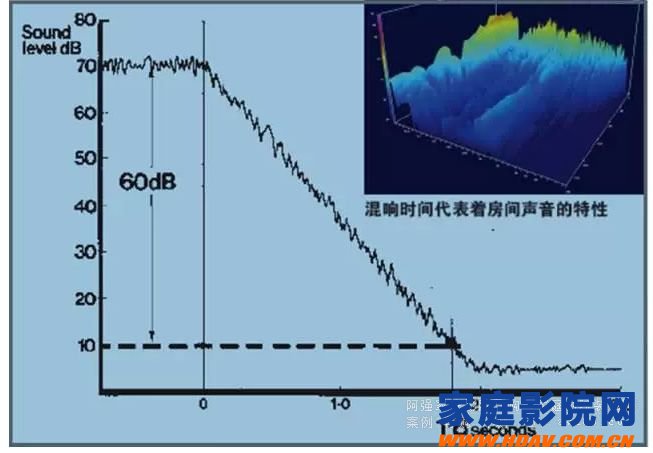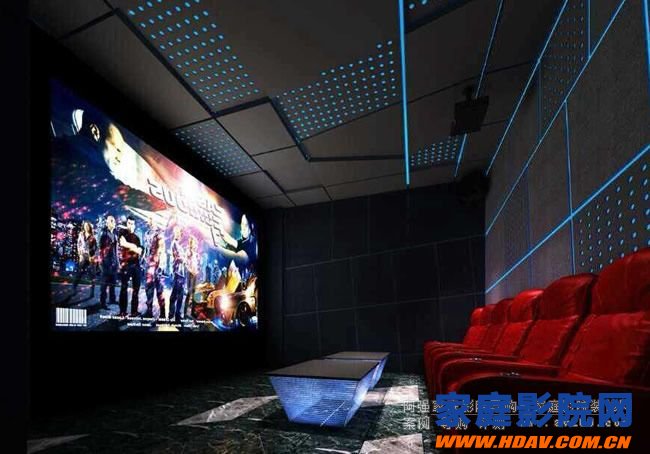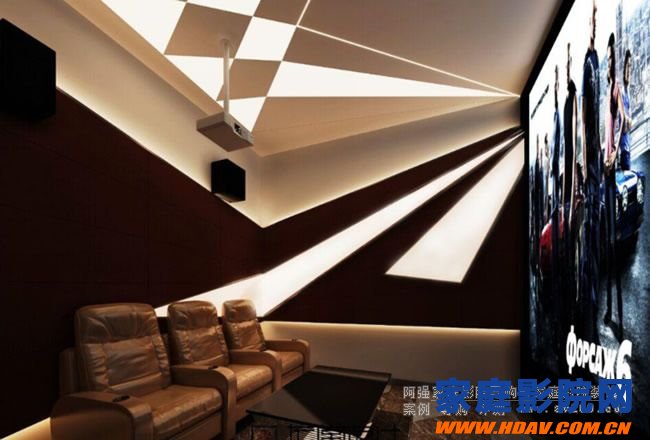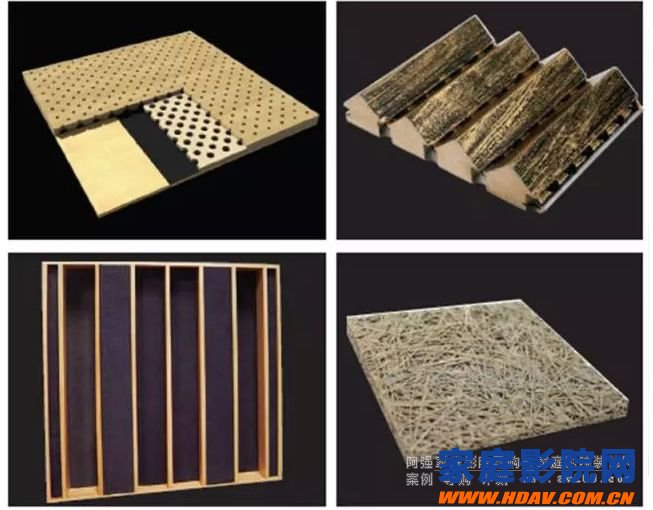
[Home Theater Network HDAV.com.cn] must control the reverberation time of the room. After dealing with the size and proportion of the micro- shadow room, you can avoid the innate problems in the acoustic quality of the room. The next step is to do The room should be acoustically treated. In fact, whether it is acoustic or diffuse acoustic processing, the room element to be controlled is a very critical factor in reverberation time. “Reverberation Time†is an acoustic term proposed by Sabin, the father of modern architectural acoustics, more than 100 years ago. For the first time, acoustic control has been brought from the state of fuzzy prediction to the stage of digital quantification, which is used by acoustic experts and designers. Mathematical calculations for more precise room acoustic processing. Subsequently, the acoustic experts created the recommended range of optimal reverberation time, standardizing and standardizing the reverberation time control of the small room.

The reverberation time is purely professional and may not be easy to understand. Simply put, it is the time it takes to produce a sound in a room until the sound dies. Strictly speaking, the reverberation time is defined as the time it takes for the sound pressure level to attenuate by 60 dB after the indoor sound source stops sounding. The unit is second (s), referred to as T60 or RT60, and RT is the abbreviation of Reverberation Time. The reverberation time is proportional to the volume of the room and inversely proportional to the average sound absorption coefficient of the room. Therefore, the larger the room volume, the longer the reverberation time; the larger the average sound absorption coefficient, the shorter the reverberation time. The reverberation time in the room is not only related to whether the sound is pleasant or not, but also closely related to the authenticity of the sound. Too short reverberation time will make the sound Dry, not loud and full; too long reverberation time will make the sound ambiguous, not real and natural. It should be noted that the reverberation time is a value closely related to the sound frequency. Different frequency bands have different reverberation time requirements. We need to separate the different frequency bands to analyze the reverberation time.
2 Control the reverberation time by changing the amount of sound absorbed by the surface of the room
Major institutions at home and abroad have corresponding best recommendations
There are two main ways to control the reverberation time RT60: changing the size of the room or changing the amount of sound on the surface of the room. For the audio-visual environment of the cinema, it is difficult to control the reverberation time by changing the size of the room, and it is only suitable for the pre-construction construction.
In the processing of the later rooms, the micro cinema is basically the main way to achieve the sound absorption by changing the surface of the room. Sound absorption actually transforms sound energy into heat energy, and each material absorbs part of the sound by interacting with sound waves. Sound absorption is usually measured by the ratio of absorbed acoustic energy to incident acoustic energy, which is the sound absorption coefficient. Different frequencies will have different sound absorption coefficients. Sound absorbing materials have different sound absorption coefficients for low frequency sounds, especially for different frequencies below 250 Hz. In addition, the sound absorbing material is more limited for low frequency sound, especially for low frequency below 250 Hz, and the sound absorption coefficient increases with frequency. In other words, when performing sound absorption processing, materials with different sound absorption coefficients must be controlled for different frequencies, but it should be noted that most materials have higher frequency absorption ability than low frequency, and must be low frequency to the room (especially Controlling low frequencies below 250 Hz requires special low frequency absorbers such as Helmholtz resonators and thin plate resonant sound absorbing materials.

Therefore, for the reverberation time in a small room, we usually use the reverberation time of the most sensitive mid-range (500-1000 Hz) of the human ear as the best reverberation time recommendation range. It must be noted that the reverberation time is a physical value that is easily affected by the volume of the room. The larger the volume, the longer the reverberation time is required. The music-based room needs more than the language-based room. Long reverberation time. For small spaces such as micro cinema rooms, the recommended optimal reverberation time is in the range of 0.3-0.5 s. As with the size ratio of the room, many organizations and research institutions at home and abroad also have different values ​​for the recommended range of optimal reverberation time, such as IEC (International Electrotechnical Commission) on the IEC29-B home audio-visual room standard. There are very detailed specifications. In addition, regarding the reverberation time of the entire frequency range, it should be noted that the reverberation time should be slightly increased in the low frequency part, and the high frequency part should be slightly reduced, but basically the entire reverberation frequency curve should be ensured to be stable. Obvious ups and downs.

The specific requirements are as follows:
At a frequency of 100 Hz, the reverberation time is 0.4 to 1.0 s;
At a frequency of 400 Hz, the reverberation time is 0.4 to 0.6 s;
At a frequency of 1000 Hz, the reverberation time is 0.4 to 0.6 s;
At a frequency of 8000 Hz, the reverberation time is 0.2 to 0.6 s.
Thus, it can be found that the optimum intermediate frequency reverberation time value recommended by the IEC29-B standard is between 0.4 and 0.6 s. In the PREMIER STUDIO certification, Dolby Laboratories stated that the entire reverberation time frequency should be steadily attenuated and no fluctuations should occur. The room's reverberation time will increase monotonically with the volume of the room. For a room with a volume of 200 m3, the recommended value for reverberation time at 500 Hz is about 0.18 to 0.34 s; for a room with a volume of 300 m3, the recommended value for reverberation time at 500 Hz is about 0.21 to 0.38 s; for a room of 2000 m3, reverberation at 500 Hz The recommended value for time is about 0.41 to 0.65 s; for a room of 4000 m3, the recommended value for reverberation time at 500 Hz is about 0.52 to 0.8 s. In addition, THX, PMI, Tsinghua University and domestic related standards also have corresponding standards.
3 Using sound absorption and diffusion materials to control reverberation time
Also pay attention to the smooth transition of the frequency response curve
Now that we have the appropriate recommended standards, we can use acoustic materials to achieve the best recommended reverberation time in the construction of the cinema room.

Firstly, the instrument equipment is used to measure the reverberation time between the micro-shadow rooms. If the reverberation time is too long, various sound-absorbing materials can be used to cover the surface of the room, increasing the overall sound absorption of the room and reducing the reverberation time. . There are many kinds of sound absorbing materials, and there are different sound absorbing properties for sounds in different frequency bands. Users should not blindly choose when they choose. They must be controlled according to the characteristics of each sound absorbing material and the characteristics of room acoustics. . Of course, on the other hand, if the reverberation time is found to be too short, we can increase the reverberation time by reflecting and diffusing the material.
Later room acoustic treatment, mainly through various sound absorption and diffusion materials to adjust the room's reverberation time
Through effective indoor diffusion processing, a smoother room low-frequency response curve can be obtained, which effectively improves the performance of the indoor sound field. Many organizations and organizations in the world have regulations on the sound absorption and diffusion treatment of the audio-visual room. The IEC stipulates that there is no sound-absorbing material such as carpet on the ground in front of the speaker. The back of the speaker and the ceiling of the ceiling are reflective, and the front of the speaker is sound-absorbing. THX recommends that 25% of each wall should have a uniform distribution of sound absorbers, and another 25% of the area should be fitted with broadband diffusers and installed with sound absorbers at intervals. PMI recommends that about 20% of the wall should be treated with sound absorption, not excessive sound absorption, but also should be careful not to absorb insufficient sound, too active room will lead to reduced sound clarity. The sound absorbing material should be distributed at various locations in the room, and the frequency response curve of the reverberation time is smoothed by using the diffuser.

The above two points include the control of the size and proportion of the micro-shadow room during the pre-construction process, and the control of the optimal reverberation time range by means of sound absorption and diffusion. It is the acoustic design and processing of the micro-studio room. A key point. We have already analyzed the key points in these two points. Next, we will bring more comprehensive design for the audiovisual space design of the cinema theater for the operators or practitioners of the cinema theater and the people who are ready to join the cinema theater. In-depth special topics will be analyzed from a variety of different perspectives such as acoustic design, acoustic processing, optical design, audio and video system tuning, and interior style design. Stay tuned. More fresh and fun home theater information, please pay attention to home theater network http:// (WeChat: cnhifi), the country's most influential home theater audio player interactive media website.
Note: This article was transferred from the home theater shopping guide network. The article is an independent view of the author and does not represent the position of the home theater network.
FGI SCIENCE AND TECHNOLOGY CO., LTD , https://www.fgi-tech.com